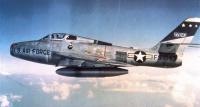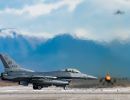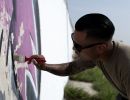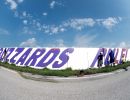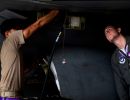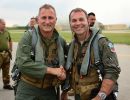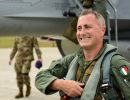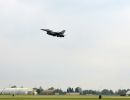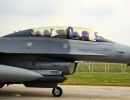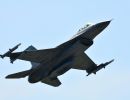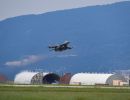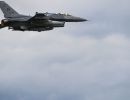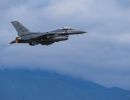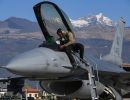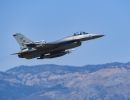The General Operational Requirements called for development of a mid-wing day fighter having top speed of 600 miles per hour (521 kn), combat radius of action' of 850 miles (738 nm), and an armament installation of eight .50 caliber machineguns or six .60 caliber guns. It was soon recognized, however, that military requirements were penalizing the plane too severely. In the final version of the basic airplane, armament was reduced to six .50 caliber guns, or an alternate installation of four .60 caliber machineguns, and radius of action was decreased to 705 miles (612 nm). The object of these deviations was to reduce weight, which, together with low thrust, constituted the aircraft's most serious problem.
The purpose of procuring the new aircraft was also to secure a suitable airframe for the GE-TG-180 axial flow gas turbine engine, that the Air Technical Service Command of the Army Air Forces was committed to develop production of this engine was later taken over by the Allison Division of General Motors.
The Go-Ahead Decision was made on 11 November 1944 and a letter contract was issued without resorting to the commonly used competitive bid contract method. Two factors accounted for this unusual procedure. The proposed airplane promised higher maximum speed and greater combat radius than were provided by the P-80, and the Republic Aviation Corporation had had experience in single place fighter design and development.
The AAF order covered 100 service test and production P-84 airplanes-25 of the former and 75 of the latter. This was subsequently decreased to 15 service test articles, which were redesignated YP-84As. The production articles were correspondingly increased from 75 to 85 and redesignated P-84Bs.
Development tests at the Langley Field Laboratory of the National Advisory Committee for Aeronautics were disappointing. Bulging of the stabilizer skin became evident and undesirable longitudinal stability characteristics showed up in high speed tunnel tests of the semispan horizontal model. The armament installation, even then, posed a major problem. Weight was increasing at such an alarming rate that in July a revised version of the P-84 was agreed upon. Design gross weight was set at 13,400 pounds. Necessary changes would be incorporated in the third experimental plane, which was designated XP-84A.
The lack of satisfactory engines delayed flight testing of the No. 1 and No. 2 XP-84 airplanes at Muroc Flight Test Base. Republic wanted to know when additional engines would be available.
The first test flight from Muroc was successful and performance of the experimental planes soon proved spectacular. The second XP-84 flew in August 1946 and, a month later, established a US national speed record of 611 mph (530 km). Both these aircraft had a 3,750 lb. s.t. J35 GE 7 turbojet. The 4,000 lb. s.t. Allison-built J35A-15 engine was fitted in the XP-84A, in the 15 YP-84A prototypes reserved for special evaluation, and in all the initial P-84B productions.
Problems of sizeable proportions began to manifest themselves. Republic expressed its concern that production quantities of P-84 aircraft were in "final stages of completion with little knowledge of certain stability and control characteristics:" This situation arose partly from the lack of Government furnished TG-180 engines during the Muroc test program. Also, because attempts to make an official world speed record had prevented comprehensive flight testing of the No. 2 XP-84 airplane. Nevertheless, a major contributing factor was the contractor's slow delivery of the third XP-84 (XP-84A) and static test article in 1946. Important design changes that were being made on the XP-84A would go into later production planes. The AAF had warned Republic that if untried designs were put in production models (as had happened in the B-29 and P-80 programs), the costly modifications that would inevitably follow might "eliminate" the P-84 program.
The AAF took delivery of its 15 YP-84As in February 1947. Aside from a more powerful engine, the prototype aircraft also differed from the first two experimental planes by having provisions for wing tip fuel tanks, and by mounting six .50 inch M2 machineguns-four in the upper front fuselage and two in the wings.
There were numerous variants of the F-84. Counting 3,515 aircraft accepted by the Air Force for MDAP, the program attained a grand total of 7,524 F-84s of all sorts. The 4,009 tagged for the Air Force embraced 2 XP-84s (accepted by the AAF in 1946), 15 YF-84As, 226 F-84Bs, 191 F-84Cs, 154 F-84Ds, 743 F-84Es, 789 F-84Gs, 3 YF-84Fs, 1,496 F-84Fs, 1 YF-84J, 1 YRF-84F, 25 RF-84s (FICON), and 363 RF-84Fs. MDAP acceptances consisted of 100 F-84Es, 2,236 F-84Gs, 852 F-84Fs, and 327 RF-84Fs.
SPECIFICATIONS:
Span: 33 6"
Length: 43 4
Height: 15' 0
Max Speed: 658 MPH at sea level
Service Ceiling: 44,850 feet
Range: 2,036 miles
Cost: $769,000

